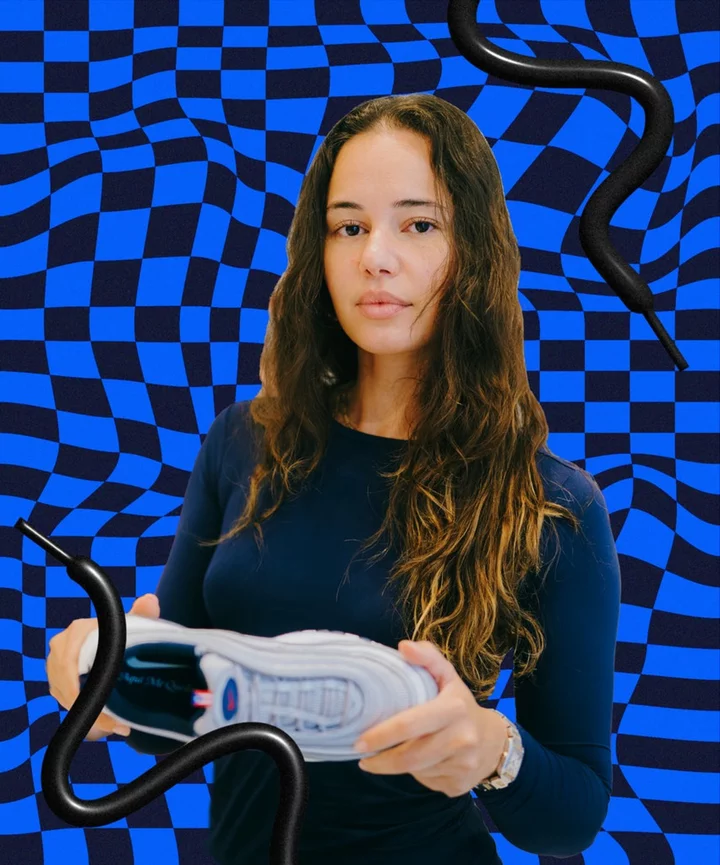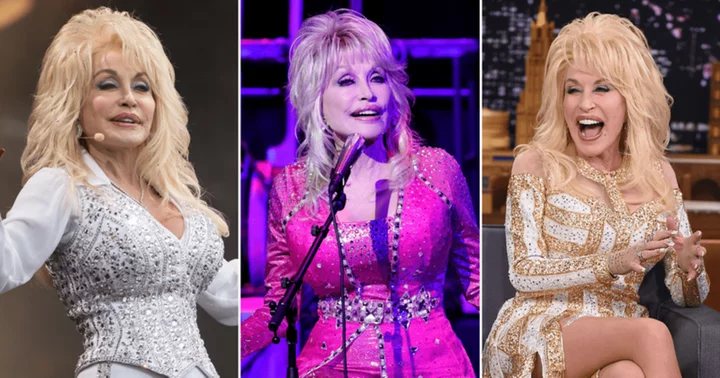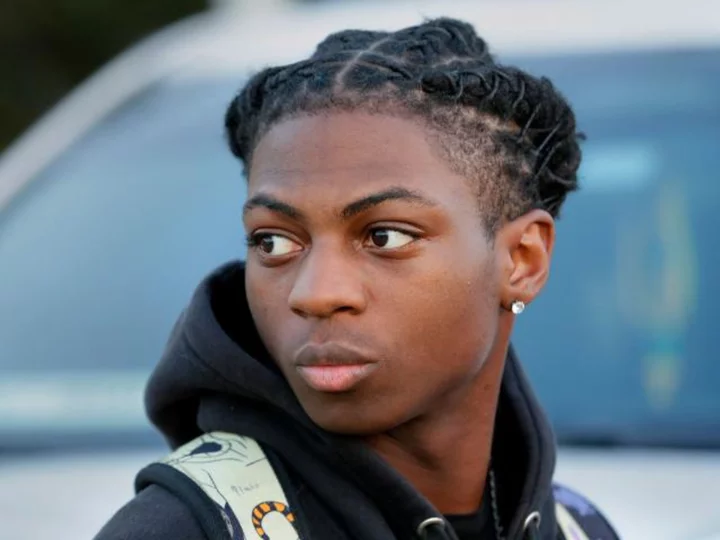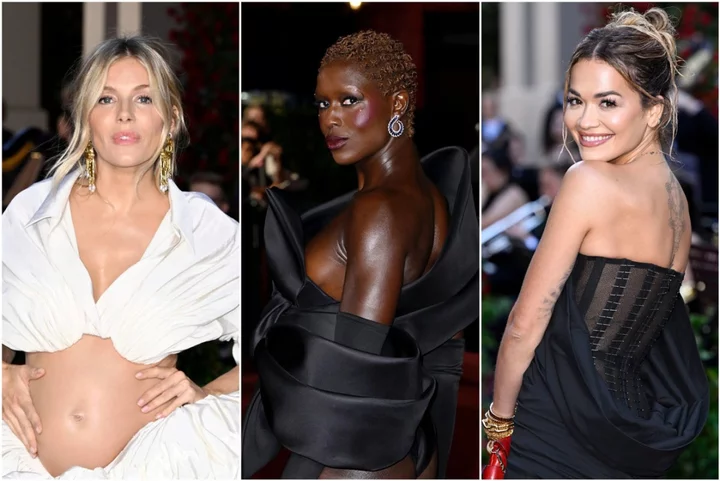As a Dominican New Yorker living between Bushwick and the southside of Williamsburg in the 1990s and 2000s, I grew up surrounded by staples of today’s streetwear — except back then, it wasn’t considered mainstream fashion; it was simply how we dressed.
From my family to my classmates, neighbors, and even the school security guards, the women in my universe were the definition of fly. Even if they were just heading to the corner bodega, they never skipped some combination of lip liner and lipstick, hoop earrings, and, of course, a nice pair of sneakers.
Long shopping avenues lined with sneaker stores that offered the newest silhouettes further spurred the ubiquity of sneakers among the predominantly Puerto Rican, Dominican, Mexican, and Black American communities near Williamsburg and Bushwick. Even if we couldn’t always afford a new pair of kicks, we could see all the colorways the footwear brands had to offer. We were all aspiring sneakerheads.
“Even if they were just heading to the corner bodega, they never skipped some combination of lip liner and lipstick, hoop earrings, and, of course, a nice pair of sneakers.”
zameena MejiaThe confluence of hip-hop and streetwear’s rising popularity gave way to the genesis of sneakerhead culture in the 1980s, which only skyrocketed with the notorious introduction of the Nike Air Jordan 1s when Michael Jordan wore them on the basketball court. Sneakerheads collected and traded sneakers and had a deep knowledge of sneaker history. But at that time, the face of the culture was predominantly male. Still, the rise of sneakers as a larger fashion trend could not contain women from joining in — and Black and Latina women were at the front.
But while women of color are pioneers of the female streetwear culture, the sneakerhead community — as exclusive as it can be for even its own hobbyists — fails to appropriately represent or recognize these women’s role in preserving and growing sneaker culture. Here, seven Latinas from across the US who grew up collecting sneakers discuss how sneakerhead culture influenced their style, careers, communities, and self-confidence.
Mellany Sanchez, New York
What does your work in footwear look like?
I’ve been working in and around the footwear industry for 15 years. My career started at 15 years old at a sneaker shop called Laces, a women’s-only footwear boutique started by Puerto Rican Louis W. Colon III that was way ahead of its time. I also interned for Colon’s magazine called Kicksclusive, which at the time featured Bobbito Garcia, Nina Sky, and Vashtie Kola, the first woman to design Air Jordans.
I realized that my relationship with footwear was more than just a job when Ronnie Fieg, the head buyer of New York City footwear retailer David Z, hired me to work as a salesperson. Fieg would later go on to start his own streetwear brand called Kith, where he hired me to be a creative director. Kith grew into a streetwear emporium with more than 50 brand collaborations a year. From there, I went to work with Vogue and then with Drake as a stylist.
“Sneakers are and always have been an initial access point for deciding how you want to be seen in the world. That’s an important choice for all young people and people of all ages to make for themselves.”
Mellany SanchezIn 2019, I worked with Nike on their 2021 Puerto Rico collection, and I developed a theme called “Aquí Me Quedo.” I pushed for the collection to feature the Air Max 97, a classic fixture in the Nike lineup. It felt akin to how Nike identifies our Puerto Rican community as a permanent fixture in their world. I used that project as a catalyst for community storytelling that has gone way beyond the sneaker, which completely sold out. If the footprint of the idea can be bigger than the physical footprint of the shoes, I consider that a success.
What does sneaker culture mean for women in your community?
I grew up on the border of Ridgewood, Queens, and Bushwick, Brooklyn. Footwear was one of the first decisions that the youth around me could make for themselves and one of the earliest forms of self-care. Sneakers are and always have been an initial access point for deciding how you want to be seen in the world. That’s an important choice for all young people and people of all ages to make for themselves. When you decide to take care of yourself and value yourself, you can move with confidence, which is necessary to get by in a city like New York.
Jenn Torres, Los Angeles
When did your love for sneakers begin?
When I wear sneakers, I feel like I carry my city with me. Growing up, I always considered myself a sneakerhead, but I was broke and never had any money. I’m from South Central, Los Angeles, near the border of Watts and Compton, and buying shoes was really expensive. My parents moved from Zacatecas, Mexico, to the US, and they had me and my siblings here. Having Air Forces wasn’t in our budget.
By the time I started making a little money after college and wanted to start my sneakerhead journey, sneaker culture had already transitioned from camping outside sneaker shops in hopes of making a purchase to scoring sneaker drops through apps. I used to have a hack: Since I have small feet, I would shop in the kids’ section for cheaper sneakers, but even then, the sneaker retailers seemed to catch wind of that hack, making smaller sizes just as expensive.
“I can give you Latina mami, but I can also give you Latina papi. As a queer woman, sneakers have also helped me express the sides of myself that I felt I otherwise couldn’t.”
Jenn TorresMy inner sneakerhead dreams would begin to unfold once I launched my career in modeling and content creation. I started modeling with Los Angeles-based clothing brand Bella Doña, and I soon caught the attention of brands like Adidas, Ugg, and more. My sneaker-collecting journey really took off when I started working with Foot Locker Women on content creation and strategy. As a content creator, I’ve worked so hard to get to this point where I’m honored to work with some of the brands I loved growing up but couldn’t afford.
How do sneakers help you express yourself?
What I love about sneakers is that I’m able to mix feminine pieces with masculine pieces. The Melody Ehsani Air Jordan OG Cherry is the perfect example with its black exterior and the feminine cherry pin. I can give you Latina mami, but I can also give you Latina papi. As a queer woman, sneakers have also helped me express the sides of myself that I felt I otherwise couldn’t.
Bianca Richards, New York
When did your sneaker journey begin?
As a Puerto Rican-Thai woman born and raised in the Bronx, having humble beginnings really set the foundation for me as a kid. I was an athlete and played softball and baseball. I would play double Dutch with other kids at the park. My sneakers enabled me to be confident on and off the court as a young girl and even to this day. I remember scoring 20 points in a basketball game while wearing my Jordan Aqua 8s, and that was one of the best experiences from my childhood. I wore those until the soles came off.
I had a full-circle moment a few years ago when I was a part of Nike’s Bronx Origins campaign honoring the 40th anniversary of the Air Force 1s and the birth of hip-hop. I felt privileged and blessed to model these sneakers, but on a bigger scale, it impacted me because I’m from the Bronx. It commemorates the iconic culture that has shaped me, my family, and my friends. Getting my hands on a pair of sneakers like the Bronx Origins means so much more to me than getting a pair of Nike Panda Dunks, which sell out every time they’re released.
“My sneakers enabled me to be confident on and off the court as a young girl and even to this day. I remember scoring 20 points in a basketball game while wearing my Jordan Aqua 8s, and that was one of the best experiences from my childhood. I wore those until the soles came off. “
Bianca RichardsToday, I’m a licensed esthetician, content creator, and social media strategist. I’ve also recently worked with the very brands I wore as a kid. This year, I was named a part of the Jordan Women’s Collective class for 2023. The collective recognizes women with a passion for sneaker culture while empowering us to connect with our communities. For Women’s History Month, the Jordan brand supported me in leading a community initiative for a youth girls’ basketball team at DREAM Mott Haven Middle School in the Bronx. In September, I’m planning to do a give-back event for children returning to school. It’s been a great opportunity to see how sneaker culture taps into my different areas of interest, including beauty, fashion, editorial, and digital media.
Why is it important to center Black and Latina women in sneakerhead culture?
A big part of that conversation, too, is giving flowers and recognizing how Black women and women of color have really set those trends because people get it twisted thinking Hailey Bieber made Air Force 1s cool, which is very incorrect. Even if we recognize the impact the Latine and Black communities have on culture, we have to make sure that there’s visibility for them and a lot of work needs to be done for that. Look at the collections Jordan has done with Melody Ehsani and Teyana Taylor: Brands are starting to realize that women consumers want to be represented and have their own stories told.
Cassidy Edwards, Houston
What attracted you to sneakerhead culture?
I got immersed in sneaker culture because it gave me the means to creatively express myself. Growing up, understanding my identity and my heritage — being Black and Latina — was very hard. I faced a lot of bullying, so I never really felt worthy of either side of my cultures. Sneakers were an integral piece of breaking through that.
As an introverted child who was having trouble connecting to her identity, heritage, and culture, I really connected with what Michael Jordan represented. As I watched his games and how he would play on the court while wearing his Jordan sneakers, I felt I could also channel his confidence. Putting on a pair of Jordans became my cool badge; it helped me fit in with the other fly girls in Third Ward in Houston, Texas.
“Putting on a pair of Jordans became my cool badge; it helped me fit in with the other fly girls in Third Ward in Houston, Texas.”
Cassidy EdwardsGrowing up in Third Ward, there was a very strong subculture in Houston of cars called slabs, which are big flashy cars with candy paint and big wheels. It’s a visual representation of Houston’s hip-hop subculture, particularly chopped and screwed music, which was founded by DJ Screw. That neighborhood had so many cool girls, who wore all kinds of Nike Air Max and Jordans. They would also wear grills and gold teeth in their mouths, and big gold jewelry — it was a huge melting pot of creative expression.
What role do sneakers play in your adulthood?
It wasn’t always easy to transition my love for sneakers into adulthood. I got pregnant at 18 in high school. I named my son Jordan — which is definitely tied to Michael Jordan — and as he grew up, we bonded over sneakers. We had fellowship through footwear, which was special. After having Jordan, I went straight into the hustle and the grind of the corporate workforce.
In those times, the corporate world didn’t really appreciate creative expression through sneakers. Since I joined the workforce so young, I was looked down on for being a young parent and for showing up in sneakers. When I would go to my son’s school, the teachers and parents also judged me as the young mixed girl who “didn’t know what she was talking about.” It was hard to get past the bullying or adversity, but I got through with my love for sneakers and being as authentic as possible. Sneakers were a way I could feel I was locked into my superpower, which is ultimately serving communities.
Bianca Kathryn Spencer, Detroit
What did sneaker culture look like in your community growing up?
In the early 2000s in Detroit, you had to have a clean, crispy pair of sneakers. Growing up, I was always around sneakers, but being raised by a single mom, I didn’t always get the newest Nikes and Jordans. Detroit is known to be very glamorous. If you’re going out to a party or if you’re going to a kickback, your sneakers are going to be fly, they’re going to be sharp, and it’s going to elevate your whole look.
Even in Houston, where I live now, there’s a huge community of Black and Latine women who are passionate about sneakers, and they’ll come to business meetings with some fly sneakers, or they’ll be on stage presenting, or getting awarded for creating impact in the community — all while wearing sneakers. Sneaker culture has taught me to explore my sense of style and that you don’t always have to wear a blazer with loafers, you can wear it with sneakers. Since collecting sneakers, it has allowed me to be more confident as a Latina, as a creative, and as a businesswoman leading my brand Yo Soy AfroLatina.
“Detroit is known to be very glamorous. If you’re going out to a party or if you’re going to a kickback, your sneakers are going to be fly, they’re going to be sharp, and it’s going to elevate your whole look.”
Bianca Kathryn SpencerWe forget the historical impact that women had on sneaker culture before it was trendy. For example, Kimora Lee’s Baby Phat line was so iconic and cute, and then, her nieces Angela and Vanessa Simmons had the Pastry sneaker line. Their shoe lines not only amplified Black women and women of color, but it also meant that 15 to 20 years later, we now have women like Teyana Taylor and Melody Ehsani partnering with Nike. At the end of the day, we are the trendsetters putting our community on.
What role does footwear play in your life now?
I was reintroduced to sneaker culture in adulthood and was eager to be at a point in my life where I could afford to buy any sneakers I wanted. When I started dating my now-wife — who’s more of a sneakerhead than I am — she taught me to explore sneakers that were out of my comfort zone. It’s both great and a problem that we’re the same shoe size because we have so many sneakers. We even wore matching white Air Force 1s at our wedding reception.
Gabriela Perez, Los Angeles & Georgia
When did your sneaker journey begin?
I couldn’t afford most nice sneakers growing up. I would watch how people styled them. In middle school, all my friends wore Jordans. My parents were not able to buy us $150 to $200 shoes. One day at school, one of my friends let me try on her Jordans and I was like, “Wow, my mom could never afford these.” And it sparked something for me: I told myself that I have to grow up and be able to buy myself a pair. When I joined the Army and could finally provide for myself, my first pair of sneakers was the Air Jordan 4 Bred. That’s when I first started collecting. I now have about 120 pairs.
How does sneaker culture serve you today?
I joined the US Army at 18 years old. Having been raised by two immigrant parents who moved from Mexico to California and who never graduated high school, I understood the military was my chance to create my own foundation. When you join the military, they try to break you down and rebuild you from the bottom up. Still, they couldn’t shake off my strong Latine culture or that love for sneakers I had growing up in Los Angeles.
“Sneaker collecting helps me heal and treat my inner child because I always wanted all these shoes, but I knew my parents couldn’t afford them.”
Gabriela PerezI’m stationed in Georgia, but when I come out to Los Angeles to visit my family, I can put on some Dickies pants, some nice kicks, a tank top, my hair up in a bun with my baby hairs smoothed, my hoop earrings, and I’m set. I can go to dinner, the movies, or shopping, and I’ll look great.
I have a rare pair of Melody Ehsani sneakers, and when I wear them they give me a sense of confidence and pride, like I got my hands on them and I feel unstoppable. Sneaker collecting helps me heal and treat my inner child because I always wanted all these shoes, but I knew my parents couldn’t afford them. Now, I’m a new mom, and I feel proud knowing my daughter will have this huge collection. I’m going to teach her about all these female collaborations and what this hobby has meant for me. It’s amazing to be able to see the growth in my family over the generations.
Arlene Suriel, Florida & New York
Where did your love for footwear begin?
My Dominican family and I moved around a lot, so I was very introverted growing up. I went to middle school and high school in Florida, where the sneaker culture was laid-back; there was a lot of hype around Reebok and Adidas classics. My mom never got us a lot of shoes; there were four of us, so I either had Sketchers or Reeboks. I had an early hunger for collecting sneakers, but at that point, I wasn’t a sneakerhead yet.
I returned to New York in my late 20s and began working at Saks Fifth Avenue. Working in retail ignited my love for sneakers again. I got exposed to the higher end of fashion with Gucci sneakers and Chanel shoes. After that, I got a job at Nordstrom, which has a sizable Nike section. The Nike at Nordstrom always had raffles, which, if you won, would guarantee access to purchase new and rare shoes.
“It’s so important to make sure our faces are seen.”
Arlene SurielWhat do sneakers offer you today?
Collecting sneakers makes my inner child happy. As an adult, I’ve learned there are no rules to getting into a hobby or style. Since sneakerheads are stereotypically men, I definitely stand out as a Latina. I’ve had people stop me to comment on my shoes. It’s a confidence booster because as a woman in the culture, you’re noticed more. My family sends me memes that say things like, “I don’t have kids. I have shoes,” and it’s true. I enjoy posting looks on social media and getting discovered by other women in the sneaker community by tagging Instagram pages like @BlackGirlSneakerJoy, @BlackChicksInKicks and @RespectFemaleSnkrHds. It’s so important to make sure our faces are seen.
Interviews have been edited for clarity and brevity.








